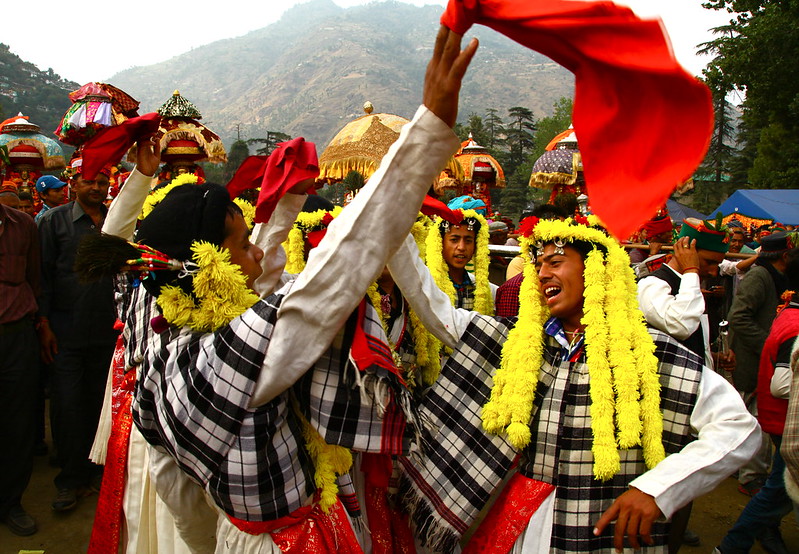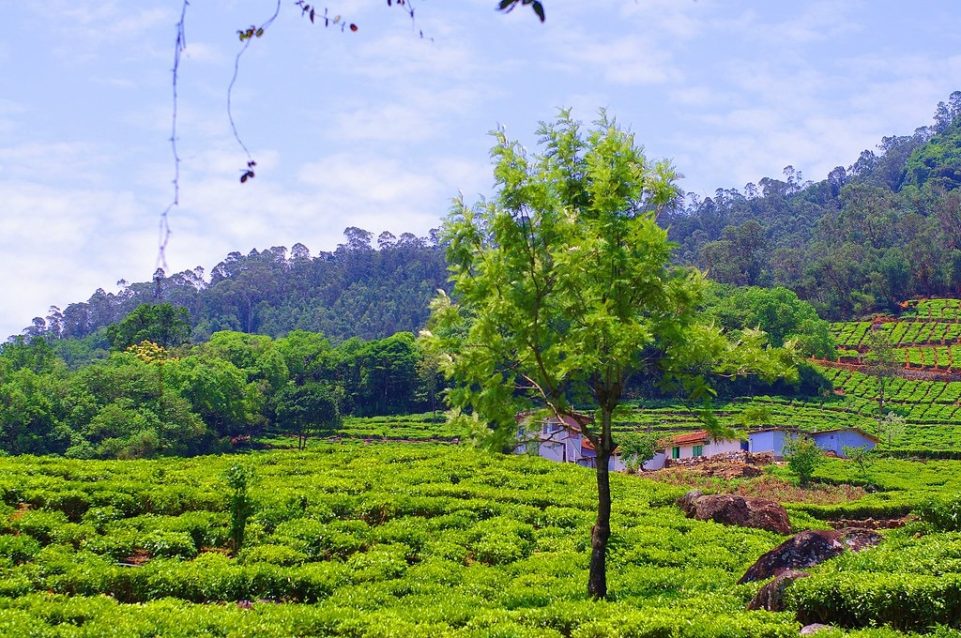After spending several years away from India, I chose to spend the last year exploring the country in its entirety, beginning with Karnataka, my native state. I decided to travel to Belgaum after spending long days on the tranquil beaches of Gokarna and Mangalore. Travelling during the monsoon season in a cab through the Uttara Kannada District, from the coast into the forests over the Western Ghats Mountains, can be a hair-raising experience. Fortunately, my driver, Ramesh ensured that I was comfortable and, most importantly, safe.
Rameshanna – A chauffeur, a guide and a walking local encyclopedia
Ramesh belonged to Puttur, a city in Dakshina Kannada district, in Karnataka, and picked me up from Udupi in a Maruti Ertiga, a cab that I booked with Savaari . Having slept barely 3 hours the previous night I was looking forward to a quick nap, little knowing that the journey I embarked on would be one of the most interesting discussions I have had in a while. During small talk, I usually consider putting my headphones back in or making up an excuse to be by myself. But Ramesh always had the most interesting subjects to discuss and facts to share with me. There was never a dull moment on this road trip, whether it was passing by a temple and learning about its history or eating at roadside khanavalis (restaurants serving simple meals) and discovering the food he’d recommend I try.
Driving at night seemed to be a fear most people possessed, but not Ramesh. He found it rather calming, and his steady driving provided me all the assurance I needed, no matter how rugged the roads were. He found the transition from the city to the rural and verdant forest areas, which he constantly drove through, always mesmerizing and perhaps was his favourite part of the drive.
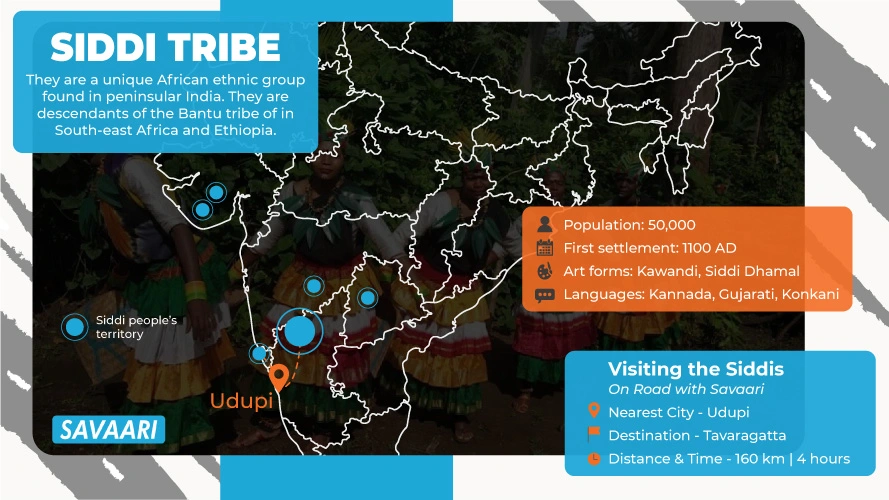
A curious case of identities at Yellapur
We stopped by Yellapur, a small town of the NH56, almost 40 km away from Belgaum. The pristine and serene natural beauty of the Ghats makes for a wonderful journey, but this is merely an appetizer, a teaser of what Yellapur is. Nestled in the thick forests of the Western Ghats in the Uttara Kannada district, Yellapur, at an elevation of 1774 feet, has wonderful waterfalls that gush down the hills into the scenic valleys.
The air was cool and moist from the recent showers, and from the thick blanket of trees came a cacophony of forest sounds chirping birds, clicking insects and other hidden animals. I stopped by the weekly market to stock up on my stash of fresh fruits for the road. Amidst the mundane surroundings, my gaze was drawn to a middle-aged mother and her adolescent son. They had extremely distinct physical features from Indians, but were dressed in traditional Indian attire.
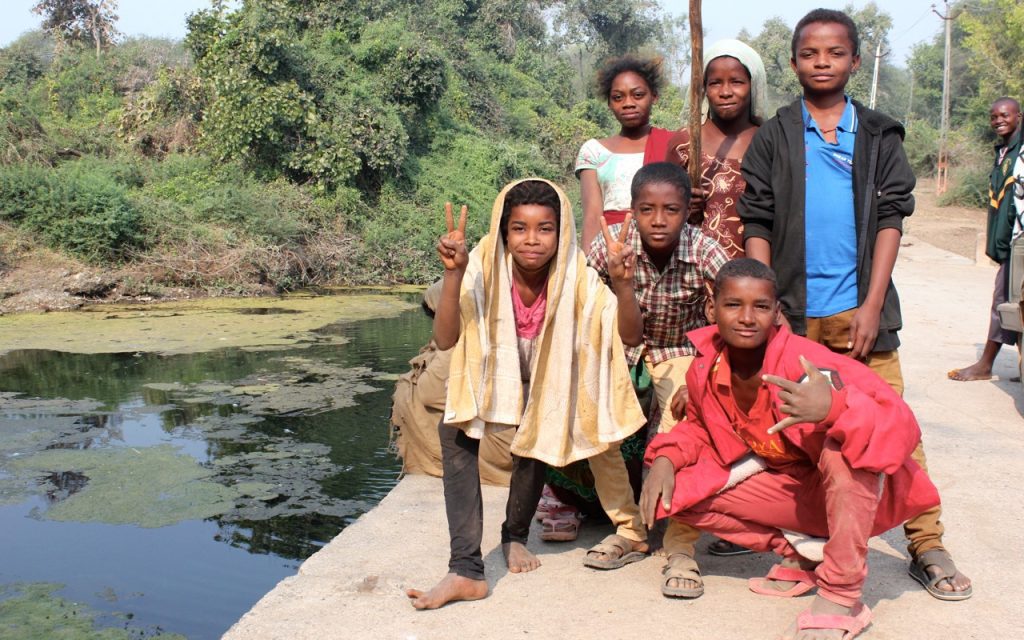
Something didn’t add up. Curious to know about the location I found myself in, I jokingly asked Ramesh, “Where am I? Am I still in India?“. He smiled at me and said, “Don’t worry; you are still in India, but I understand your confusion. We are close to the Siddi village of Tavargatta– a village inhabited by Indians of African descent who have lived in India for several centuries. I was astounded, perplexed, and fascinated. I always imagined that North Sentinel Island in the Andamans was home to India’s lone African tribe, which violently opposed all contact with foreigners for their own protection. But I was mistaken. I knew nothing about the Siddis in Karnataka, and I was suddenly piqued by a hunger to learn more.
The Siddi tribe in Karnataka – India’s little-known African tribe
A quick Google search told me that the Siddis (Kannada: ಕರ್ನಾಟಕದ ಸಿದ್ಧಿಗಳು) are descendants of the Bantu populations of East and Central Africa and are also sometimes referred to as Habshis or Abyssinians. It is thought that they were transported to India during the slave trade, starting as early as the 7th century, first by the Arab merchants and traders and later by the Portuguese and British, starting in the 16th century. History says that they were ferried to Goa as slaves. The community first settled in Goa and eventually migrated to Karnataka in search of food and shelter, but they were not met with a better fate when they arrived. The Siddis in Karnataka had chosen a life of isolation within the forests and had created their own community, including doctors, performers, and other occupational specialists. Between 40,000 and 50,000 Siddis currently live in India.
Unraveling the languages of Siddis in Karnataka
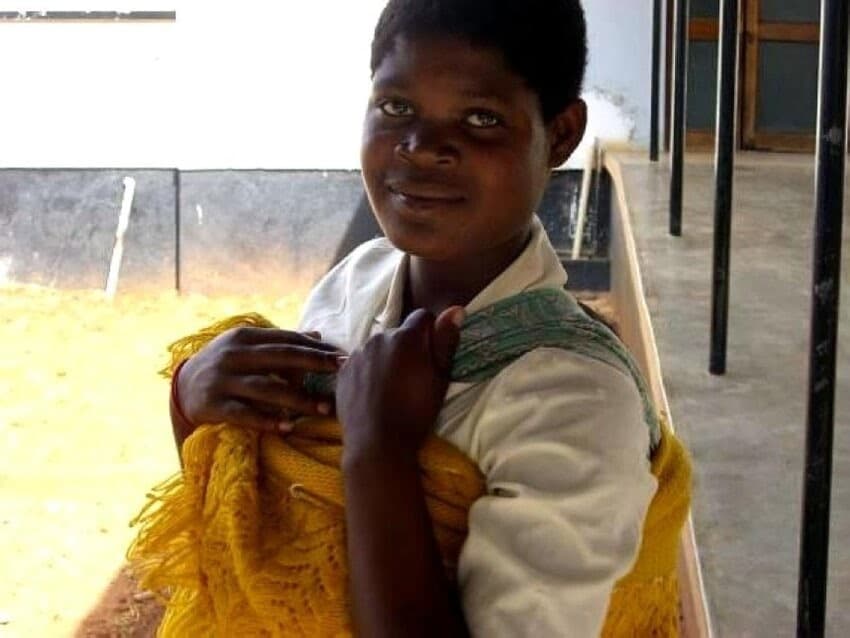
As the mother walked out of the market, I noticed she had left a jute bag of groceries behind, so Ramesh and I walked behind and politely called out to her. She received the bag and said, “Dhanyavadagalu,” which means “thank you,” with a smile. I was taken aback by how comfortably and naturally she interacted with Ramesh. That’s when I discovered that Siddis in Karnataka speak Kannada, the state’s official language, fluently, with Konkani, the local dialect, being their primary language.
She introduced herself as Latika and expressed amazement that I could communicate with them in Konkani, as most natives communicated to them in Kannada. According to Latika, there are only a few Siddi families in and near Yellapur. Most families reside in small villages, isolated groupings, or individual households in the surrounding forests, and they must drive to larger towns once a week on specific market days to buy groceries. I looked at her grocery bag and spotted a variety of ingredients that resembled ingredients used to make classic Konkani dishes and jokingly asked her, “Jeva katir kasa karta, Saibini?” which roughly translates to, “What are you cooking?”. “Saibini” is an appellation for “Mother Goddess,” and it is used to refer to women by the Konkani-speaking diaspora all along India’s west coast. She responded by asking “Would you like to try some authentic Siddi cuisine, Saibini?”
Dietary and cultural habits of Siddi tribes
One of the best ways to learn about a culture is through its food. So, when Latika asked me if we wanted to join her family for dinner at her place, we simply couldn’t say no. Ramesh offered to drive us to Latika’s residence, and we were soon on our way to Tavaragatta. The concrete roads gradually gave way to unpaved roads as she led us to her house, and ultimately the unpaved roads became no roads at all. I told her that as we drove along, the roads became more rugged. She informed me that because of a lack of government initiatives to improve connectivity, this is usually the case everywhere the Siddis live. As a result, the Siddis are forced to build their own roads.
After a 15-minute stroll through the dense growth of areca nut trees, I caught my first glimpse of the house that would be hosting me for dinner. As soon as I walked into the house, I was made to feel perfectly at home with an evening snack that couldn’t have been fresher – raw honeycombs. She explained that honey is a source of survival for the Siddis in Karnataka, especially when they don’t have enough money to buy food.
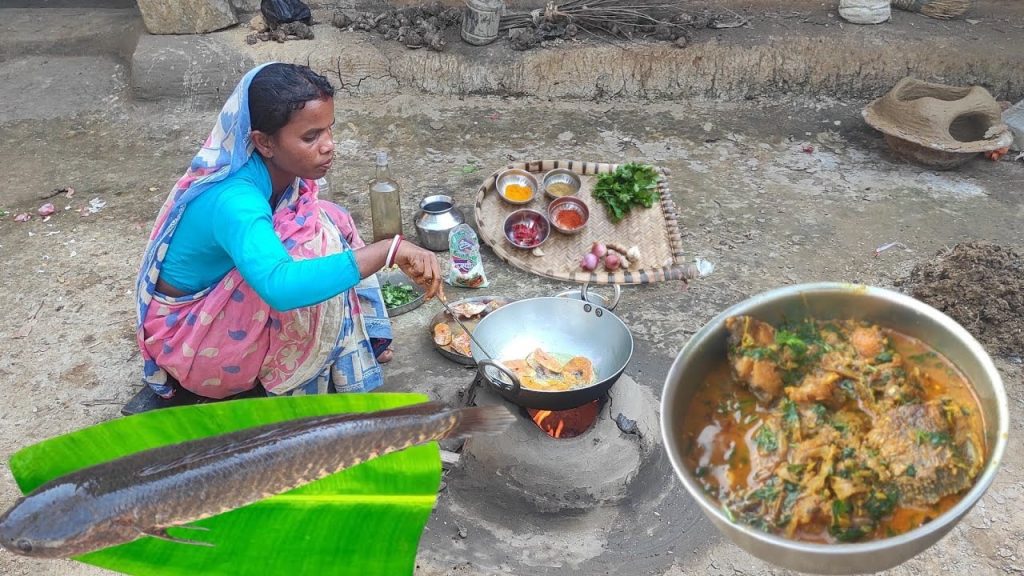
Siddi Cuisine – A delicious spread cooked by Latika
Latika later prepared Machli Tabli, a fish curry made with ghagor fish that is a Konkani staple in Siddi households throughout Karnataka. As she cleaned and sliced the fish, I was surprised to see that she used practically every portion of the fish, demonstrating their culinary resourcefulness. She cooked the fish in grated coconut, black pepper, green chillies, turmeric, garlic, and green chillies. While it was cooking, she began to make Murdi Bhaji, a side dish prepared from Murdi, a spiral vegetable that resembled a fiddle-head fern and is typically produced near lakes and rivers.
The Murdi was then combined with green chillies, onions, turmeric, and tomatoes. On a banana leaf, Latika served Machli Tabli and Murdi Bhaji with rice, and it was one of the most flavorful meals I’ve ever had. Aside from the Machli Tambli and Murdi Bhaji, some of the prominent Siddi cuisines are Kurli, a crab curry, and red ant chutney. The lack of influence of foreign ingredients or dishes inspired by Africa on their cuisine struck me the most. Siddi tribe food encompassed Indian spices and was predominantly dependent on the forest. Their diet included Indian spices and was primarily dependent on what they could forage from the wild. That made me ponder how they’re similar to Indians yet so different.
[Also read: Rural Tourism: Exploring the cultural roots of our nation]
Do the Siddi’s culturally connect with Africa or India?
Except for some physical qualities inherited from their African forefathers, I was told that the Siddis have very few cultural ties to Africa that influence their daily lives. Indo-African Siddis in Karnataka speak fluent Kannada, wear traditional Indian clothes, and practice the same religions as any other Indians in the area. By building a cultural bridge, they have integrated seamlessly and added immensely to the cultural fabric of the region.
Siddi Dhamal – African folk rhythms in India
Dance and music have been vital to their cultural identity in terms of cultural prowess. Many of their creative traditions strongly reflect their ancient Bantu roots. Rameshanna told me that the Siddis are well-known for their emotive dance form, Siddi Dhamal, which vividly describes their village life. Dhamal was first performed as a celebration dance to commemorate tribe members when they returned from a successful hunt. The music still bursts with distinctly African textures and grooves, showcasing spiritual chants, strident rhythms, and booming layers of hand drums that have unmistakable flavours of Central African ensemble drumming.
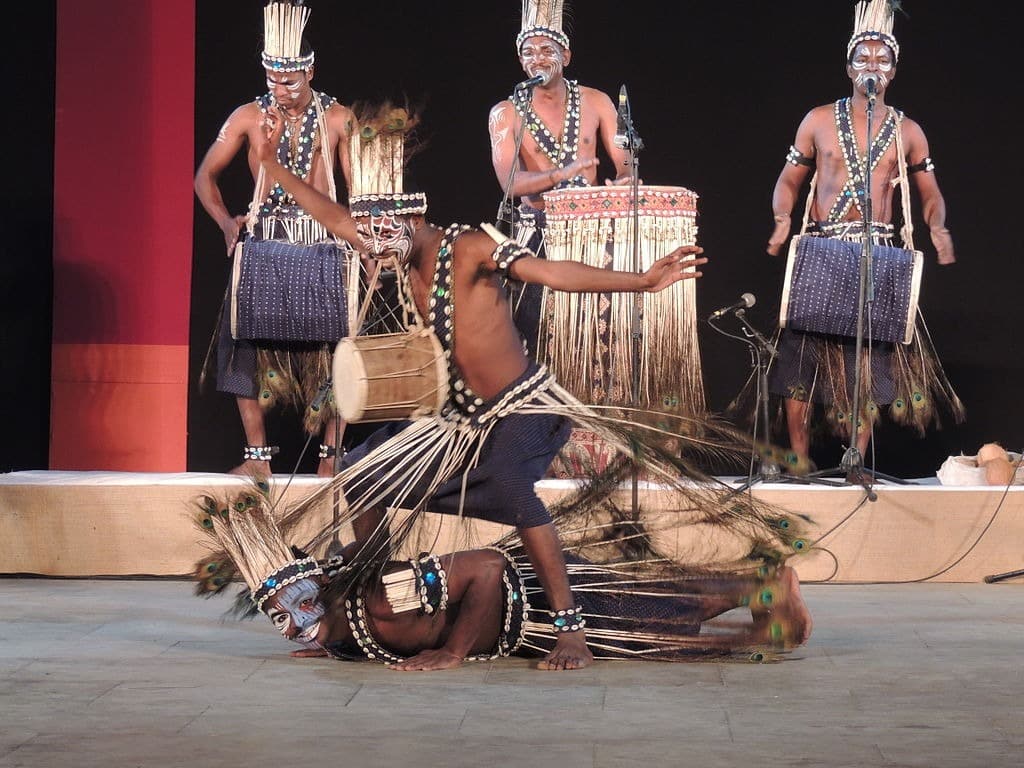
While women sing, men often establish the beat with the dammam, a percussion instrument that looks similar to a mridangam but is made of wood and covered with deerskin on the sides. They paint their faces red, blue, and green with designs inspired by traditional African body painting and dress in bright orange tiger print skirts, straw hats, and leaves. Though they are influenced by Indian culture and language, their ancestral dress code and beats in this art form still retain their unique identity.
Kawandi – Weaving stories of the Siddis
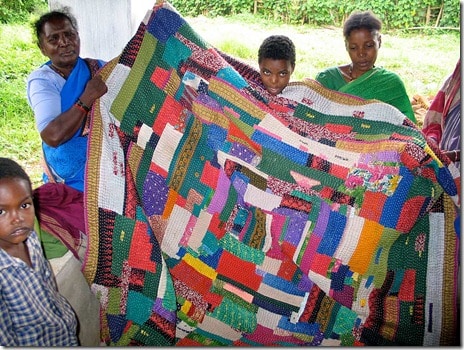
As I was leaving, Latika told me that she didn’t want me to leave empty-handed. She handed me a quilted fabric called Kawandi. She told me that the procedure involves arranging recycled fabric scraps in creative geometric designs, which are sometimes imbued with religious meanings. Like multicolored mosaics, these unique quilts are woven by women of the Siddis in Karnataka. I noticed that Latika had inserted a few grains of rice under the final layer of the quilt. She told me that this is a symbolic gesture of prosperity for the quilt owner. The Siddis describe it as a nod to the Kannada saying ‘hotte thumbisodu’ (‘May your belly be full”). It made me realise that only when art reaches your heart does it become a true masterpiece.
On my way back from Yellapur, I looked at my souvenir and wondered whether there were any initiatives in India to showcase Siddi art forms to revive and save them from slipping into history. That’s when Ramesh told me that the non-profit organization Siddis Women Quilting Cooperative (SWQC) was founded in 2004 to give a source of revenue to the community and quilt makers. In 2011, the Museum of the African Diaspora hosted an exhibition titled “Soulful Stitching: Patchwork Quilts by Africans (Siddis) in India,” which helped these quilt artists and the community acquire exposure. The Siddi Dhamal was recently featured in the National Tribal Dance Festival (NTDF) in Raipur, Chhattisgarh, where a dancer stated that their heart is Indian but their culture is African.
Challenges faced by the Siddis – how awareness can help overcome adversities
While efforts have been made to showcase Siddi art forms in India, one can hope that this can serve as a catalyst to raise awareness and improve the lives of Siddis in India. Siddis, despite being Indians for millennia, face racial discrimination in India, from people who are unaware of their identities and origins. Young Siddis in their twenties are pursuing degrees and returning to their villages. Some are teachers, others are social workers, and some aspire to be lawyers to combat discrimination and exploitation of scheduled tribes. They are better qualified than their parents’ generation to negotiate the world outside their remote villages and offer their tribe a voice in modern India, thanks to their education.
The Siddis remain critical about the fact that hundreds of photographers and scholars who have come to study Siddis usually take what they need and then leave. The Siddis in Karnataka hope that anyone approaching them will interact with them and strive for the welfare of the community.
How does one visit and learn from the Siddis firsthand?
Apart from Karnataka, the Siddis have also settled in Gujarat, Maharashtra, and Andhra Pradesh. In Karnataka, they are concentrated in the taluks of Uttara Kannada’s Yellapur, Haliyal, Ankola, Joida, Mundgod, and Sirsi, as well as Belgaum’s Khanapur and Dharwad’s Kalghatgi. If you’re going to Yellapur, try taking a detour to Tavargatta, a Siddi village. It’s a culturally enriching experience, and interacting with India’s true and ingrained diversity is always a good idea. To get there, you would simply need to rent a Savaari cab from Mangalore or Udupi, and embark on a roadtrip journey that would take between 3 to 4 hours. The roads along the trip are somewhat bumpy, so you may need a stable and robust vehicle to help you handle the dirt roads smoothly.
Raising awareness about the Siddis – Some thoughts and takeaways
I urge all of you to visit this unique community and deeply reflect on the knowledge you gained, the memories you made, and the ways you can empower the community. Spreading awareness about the Siddi people among your friends and family is an excellent first step toward alleviating their hardships. A small responsibility rests on all our shoulders to preserve the culture and heritage of this wonderfully diverse community, which has made India their home.
Last Updated on January 17, 2024 by Swati Deol

